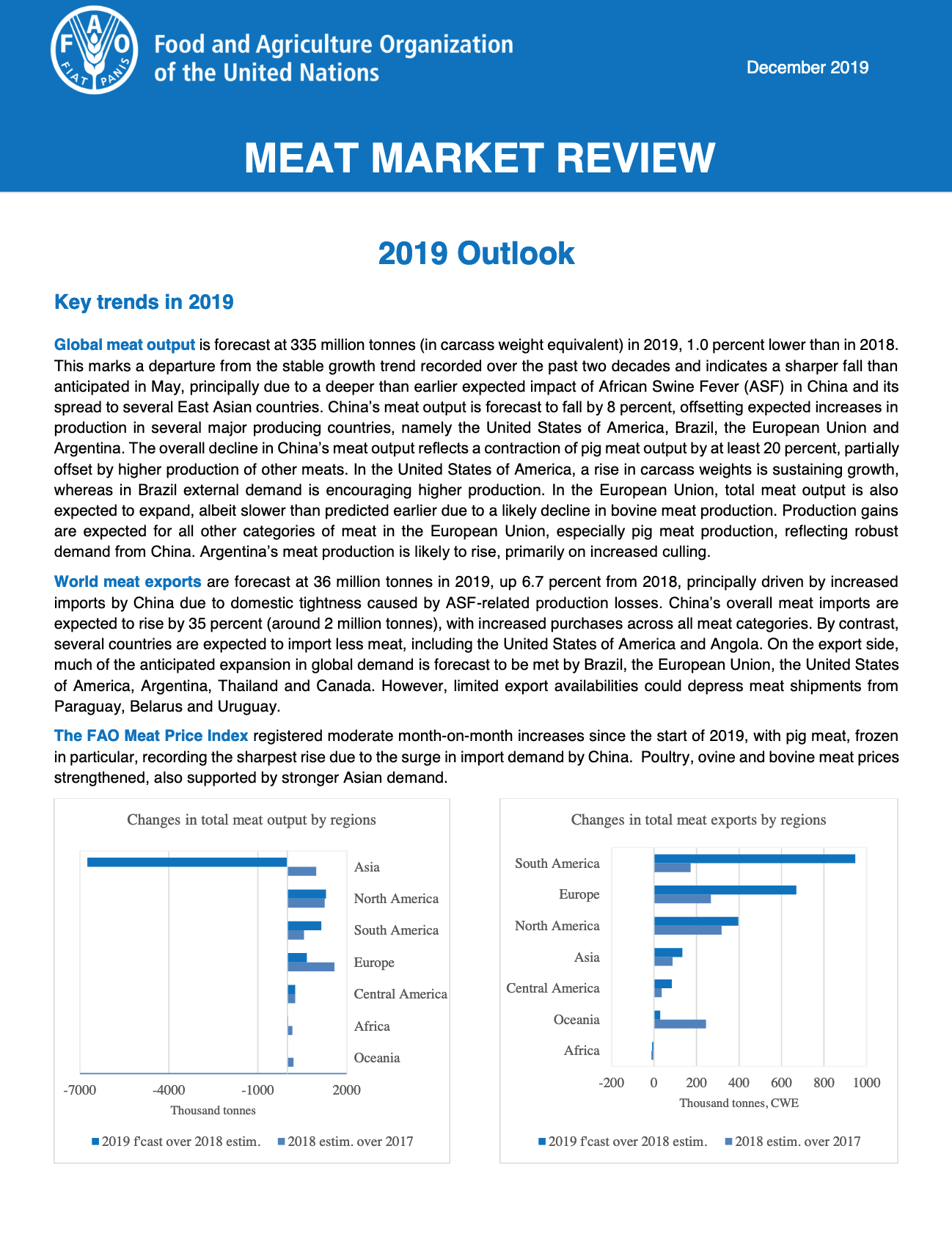Publications
The EST publications hub showcases the entire output of the division. The best way to find publications is by way of using our search facility wherein you can select pre-defined filters to optimize your search query.
Global meat output is forecast at 335 million tonnes (in carcass weight equivalent) in 2019, 1 percent lower than in 2018. This marks a departure from the stable growth trend recorded over the past two decades and indicates a sharper fall than anticipated in May, principally due to a deeper than earlier expected impact of African Swine Fever (ASF) in China and its spread to several East Asian countries. World meat...
International prices of wheat generally rose in November although large global supplies capped the increases, those of maize also increased except in the United States of America, where they softened amid a slow pace in export sales. International prices of rice fell to six-month lows, pressured by new crop arrivals and sluggish demand. In Southern Africa, food prices continued to climb steeply in Zimbabwe amidst an economic crisis. Elsewhere, tight...
The 2018 compendium offers an overview of salient government policies and related private sector measures concerning global and national markets for oilcrops and derived products. Its purpose is to facilitate the work of policy makers, market experts, analysts and other interested stakeholders by providing a short, concise, overview of policy developments relevant to the sector. Detailed news items are presented in tabular form (in English only), preceeded by a breief...
FAO assesses that globally 42 countries, of which 32 are in Africa, continue to be in need of external assistance for food. Conflict‑driven crises are the main cause of the high levels of severe food insecurity. Additionally, agricultural droughts and floods have sharply reduced harvests and contributed to abrupt spikes in food prices significantly aggravating food insecurity.
From a global perspective, food commodity markets in 2019/20 should continue to be generally well supplied, with international prices remaining below their recent peaks. However, a fast changing trade environment along with the outbreaks of important animal and plant diseases could pose challenges for global market stability.
International prices of wheat rose in October after declining during the past few months due to strong demand for exports and lower production prospects in key producing countries of the Southern Hemisphere. Prices of maize also increased, supported by reduced supplies in the United States of America and a pick-up in sales from Argentina and Ukraine. By contrast, slow demand and harvest pressure caused international rice prices to subside. In...
The Government declares the food emergency law until 2022, as the upsurge of food prices is severely constraining access to food. Despite the expected record cereal production in 2019, prices continue to increase mainly due to the sharp weakening of the local currency and soaring inflation rate.











